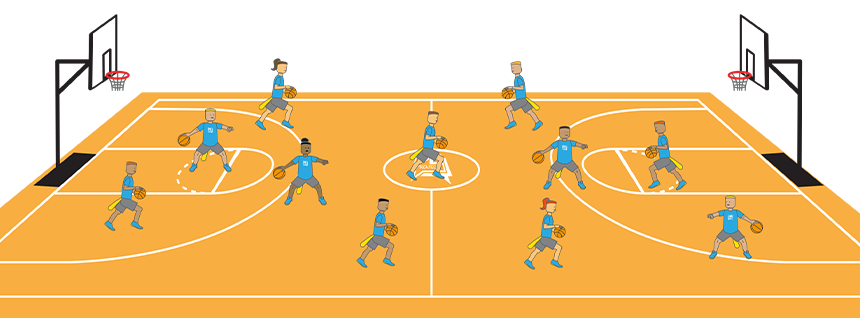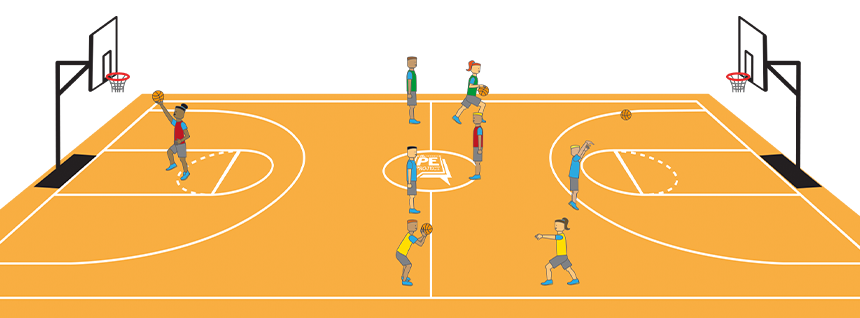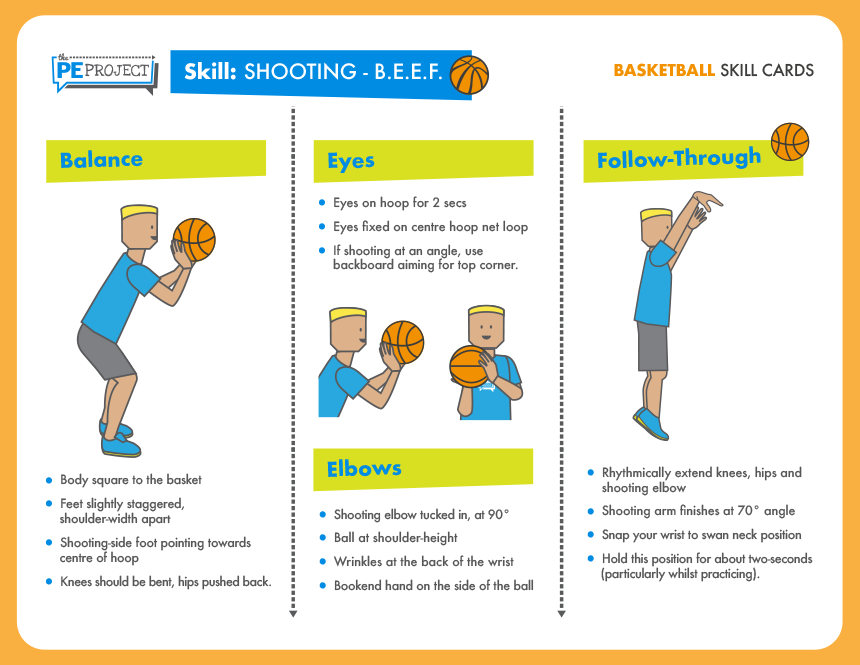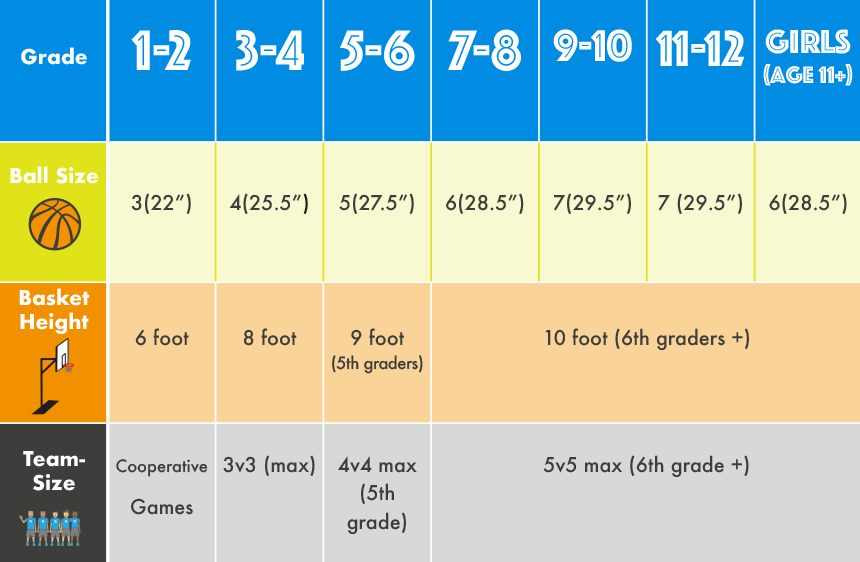


When teaching basketball in Physical Education lessons, it is helpful to have a range of activities, teaching models and styles in the toolbox to help ensure students make great progress. Basketball lessons can be delivered in a range of ways depending upon the age, group size, resources available and your level of knowledge of the game.
If teaching lower Elementary (Primary/KS1) you may want to opt for more cooperative group activities where students can explore the different skills without the pressures of any defenders. Then in upper Elementary (Primary/KS2) students can experience a range of competitive, cooperative, and small-sided games (3v3). Once students move into Middle-School (KS3) and High-School (KS4 & 5) this is where students can begin to experience the full-scale versions of the game through 5-on-5 games. A great way to do this would be using a ‘Teaching Games for Understanding’ model.
Below are a few basketball activities, an example skill card and lesson plan from our ‘Ultimate Basketball Pack’ that you can use in your lessons.

Description: Every student has a basketball and a pinnie/bib which is tucked into the back of their shorts (like a tail). The aim of the game is for all students to keep their tail for as long as possible, whilst trying to take away other player’s tails. In order to do this, players must always dribble the ball around the area, maintaining good control of the ball, keeping their heads up and watching their backs. If a player loses their tail, they must continue dribbling and try and get someone else’s tail which they can then put back in their shorts. If a player takes a tail whilst already having one, they can either hold on to it until later, or generously give it to a class mate who has lost their tail. Each round 90s to 2mins. Repeat 2 or 3 times.
Alternative: Students can only have one tail. Once they lose it, they must try and get someone else’s, until their are no more players left with a tail. When a player has taken someone else’s tail they must place it in a designated area e.g., hulahoop on the side of the court.

Description: Every student has a basketball and a pinnie/bib which is tucked into the back of their shorts (like a tail). The aim of the game is for all students to keep their tail for as long as possible, whilst trying to take away other player’s tails. In order to do this, players must always dribble the ball around the area, maintaining good control of the ball, keeping their heads up and watching their backs. If a player loses their tail, they must continue dribbling and try and get someone else’s tail which they can then put back in their shorts. If a player takes a tail whilst already having one, they can either hold on to it until later, or generously give it to a class mate who has lost their tail. Each round 90s to 2mins. Repeat 2 or 3 times.
Alternative: Students can only have one tail. Once they lose it, they must try and get someone else’s, until their are no more players left with a tail. When a player has taken someone else’s tail they must place it in a designated area e.g., hulahoop on the side of the court.

Skill Cards: When teaching basketball it can be extremely useful for students to use skill cards to deepen their understanding of complex skills. For example, when trying to teach students how to shoot in basketball with correct technique, they could use the above skill card to read over with a partner. After, they will then take turns practicing shooting whilst their partner observes and gives feedback. This is an example of a 'Reciprocal Teaching Style' which you can learn more about in our 'Teaching Styles' article.

Teaching Considerations: When teaching any activity to children it is important to consider: What grade are they in? What size ball should they use? How high should the basketball be? and; What sized teams should they play in? We hope that the above table will help you answer those questions quickly and confidently. If you don't have the luxury of having an adjustable basketball hoop, simply hang a hula hoop over the rim and students can shoot for that instead or as well i.e., 1 point for the hula hoop, 2 points for getting the ball in the basket.